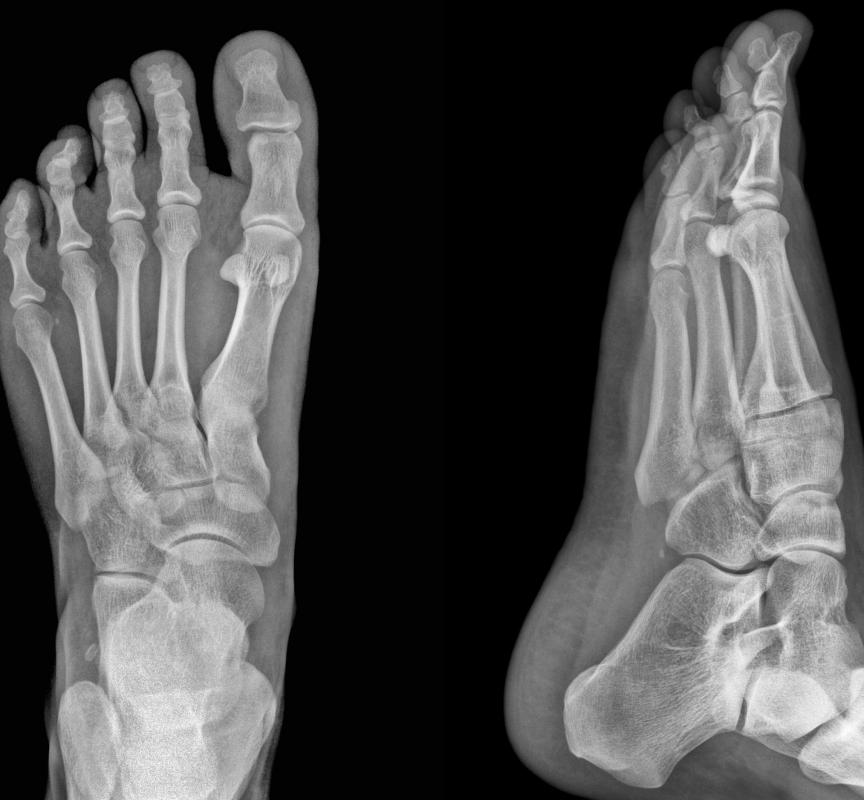At WiseGEEK, we're committed to delivering accurate, trustworthy information. Our expert-authored content is rigorously fact-checked and sourced from credible authorities. Discover how we uphold the highest standards in providing you with reliable knowledge.
What Are the Different Types of Gait Abnormality?
Most healthy people walk in ways which are perceived as normal. When a person moves the legs in an abnormal fashion, with or without other unusual postures, then a gait abnormality may be present. The definitions of the various gait abnormality groupings can vary according to the medical authority providing the descriptions, but the abnormality is usually classified by the movement involved. Many different medical issues can cause problems walking, which can range from arthritis to nerve damage.
Propulsive gait is one abnormal way of walking, and this type is defined by a person who walks with his or her head bent downward, and who holds the rest of the body in a stiff manner. Another way of referring to this type of walk is Parkinsonian; additional signs include a propensity to take small steps and to speed up the walk the more steps are taken. Additionally, the person does not move the arms in a regular swinging motion such as is usual. Apart from Parkinson's disease, this type of walk may arise from certain types of poisoning or as a temporary side effect of some medications.

A scissors gait abnormality is a walk that involves the knees and the legs accidentally crossing as the person walks. Injury to the brain or to the spinal cord can produce this type of gait, as can stroke or multiple sclerosis. A scissors gait can also be an example of a spastic gait, which includes walks that affect one or both legs. Typically, a spastic gait means that the person tends to drag a foot across the floor instead of taking regular steps.

Steppage gait occurs when a person is unable to properly judge when the lifted foot is going to hit the floor, resulting in a heavy stepping sound. An alternate name for this type of walk is slapping gait, from the sound of the footfalls. Causes include Guillain-Barre syndrome, polio, and spinal problems.
In waddling gait abnormality, the feet are wider apart than normal, and the person has a similar type of walk to a duck. As well as developmental problems with the hips from birth, a person may have this walk due to issues with the muscles. A larger group of gait abnormality, called ataxic gait, contains those ways of walking that may be similar to the way a person walks while drunk. This involves the use of a wide stance and wobbliness of the body from side to side. Possible causes include injury to the brain, stroke or as a side effect of medicine to treat seizures.
AS FEATURED ON:
AS FEATURED ON:

















Discussion Comments
@Fa5t3r - Sometimes it's relatively serious but there's not much you can do. My cousin has one leg that is significantly shorter than the other and he basically has to keep one heel raised all the time in order to compensate when he's walking. He wore some special shoes at one point, but decided that he didn't like them and just kept up with his own improvised gait.
If he had kept with the shoes he'd have to wear them all the time, since he wouldn't have ever become used to compensating without them.
@KoiwiGal - Don't panic over it but don't ignore it if it is causing problems. Maybe if you're concerned about the way someone walks you could bring it up at a routine doctor's visit or something like that. Or even investigate online what different options might be.
An abnormal gait could be a sign of something else, or it could be a problem that will grow worse rather than better over time. It's much easier to correct a child's gait than to change an adult's way of walking, particularly if the gait has changed the way their bones and muscles work over time.
Often kids will have strange looking gaits that just straighten out by themselves as they get older. My nephew was what my mother called "pigeon-toed" for a long time, meaning that he pointed his feet inwards as he walked. It never seemed to bother him and he eventually stopped doing it so much.
I just worry that people get a bit too anxious about their kids being normal when it's not that abnormal to have an unusual gait.
Post your comments